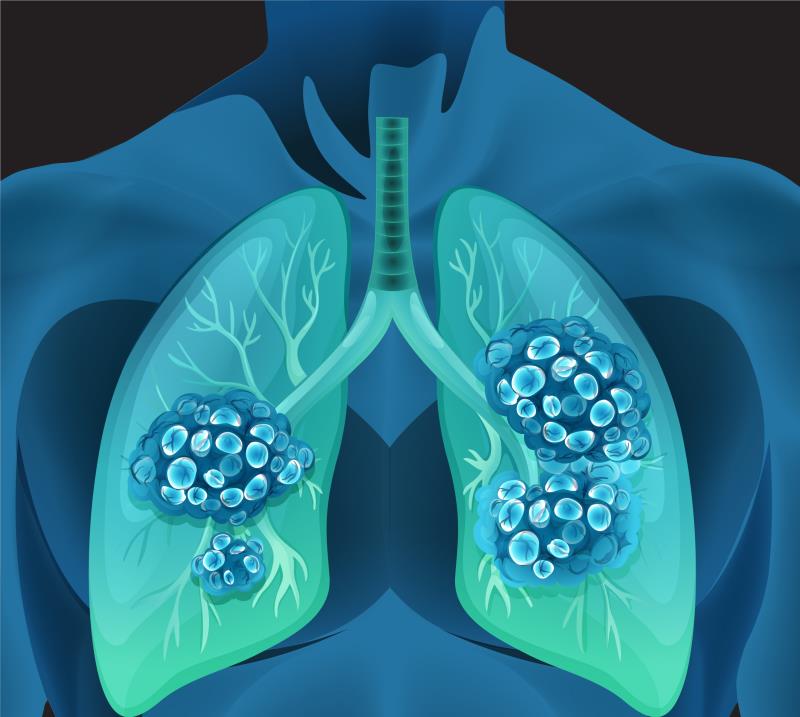eXalt3: Ensartinib trumps crizotinib in ALK+ NSCLC





In patients with locally advanced or metastatic ALK+ non-small cell lung cancer (NSCLC), treatment with the ALK tyrosine kinase inhibitor ensartinib led to superior progression-free survival (PFS) compared with crizotinib, according to interim results of the phase III eXalt3* trial.
Ensartinib led to an approximately 50 percent reduction in the risk of disease progression or death, said the authors. “[The current PFS results suggest that] with longer follow-up, ensartinib is trending toward further improved median PFS overall and in patients without brain metastases at baseline,” said study author Associate Professor Leora Horn from the Vanderbilt-Ingram Cancer Center in Nashville, Tennessee, US.
Patients in this global, open-label study had ALK+ stage IIIB or IV NSCLC, were ALK inhibitor-naïve, and had received ≤1 chemotherapy regimen. They were randomized to receive ensartinib (225 mg QD; n=143, median age 54 years, 50 percent male, 54 percent Asian) or crizotinib (250 mg BID; n=147, median age 53 years, 52 percent male, 57 percent Asian). Twenty-four and 29 percent of patients assigned to ensartinib and crizotinib, respectively, had received prior chemotherapy, and 33 and 39 percent, respectively, had brain metastases at baseline. Patients were followed up for a median 23.8 and 20.2 months, respectively.
In the intention-to-treat population (ITT), PFS was significantly improved with ensartinib compared with crizotinib (median 25.8 vs 12.7 months; hazard ratio [HR], 0.51, 95 percent confidence interval [CI], 0.35–0.72; p=0.0001). [WCLC 2020 Virtual Presidential Symposium, abstract 2]
The PFS results were consistent in the modified ITT (mITT) population comprising 247 patients (121 and 126 on ensartinib and crizotinib, respectively) with ALK+ disease as per Abbott FISH test (median not reached vs 12.7 months; HR, 0.45, 95 percent CI, 0.30–0.66; p<0.0001; 36-month PFS: 51 percent vs 19 percent).
In the mITT population, objective response rate (ORR) was 75 and 67 percent in ensartinib and crizotinib recipients, respectively, with a complete response rate of 14 percent vs 6 percent. Median duration of response was not reached in the ensartinib group compared with 27.3 months in the crizotinib group, with 58.7 and 26.7 percent of ensartinib and crizotinib recipients, respectively, responding at 36 months.
Despite the small number of patients with brain metastases (11 and 19 ensartinib and crizotinib recipients, respectively), intracranial confirmed ORR was greater in the ensartinib vs crizotinib group (64 percent vs 21 percent). In patients without brain metastases, PFS was greater in ensartinib vs crizotinib recipients (median not reached vs 16.6 months; HR, 0.40; p=0.0009; 36-month PFS: 61 percent vs 25 percent), with a longer time to treatment failure (TTF) in the brain in the ensartinib vs crizotinib group (12-month TTF: 4.2 percent vs 23.9 percent; HR, 0.32; p=0.0011).
“Ensartinib showed superior efficacy in the brain over crizotinib,” highlighted Horn.
Overall survival (OS) data is immature at present (median not reached in both groups; HR, 0.88; p=0.6470; 24-month OS: 78 percent in both groups).
Serious treatment-related adverse events (TRAEs) occurred in 8 and 6 percent of ensartinib and crizotinib recipients, respectively. TRAEs led to dose reduction in 24 and 20 percent, respectively, and to discontinuation in 9 and 7 percent, respectively. Low-grade rash and transaminitis were the most frequently reported TRAEs with ensartinib, said Horn.
“Ensartinib represents a new first-line treatment option for patients with ALK+ NSCLC,” she concluded.